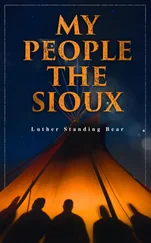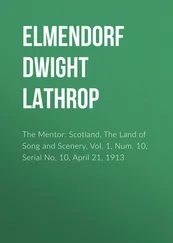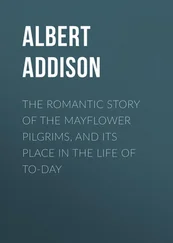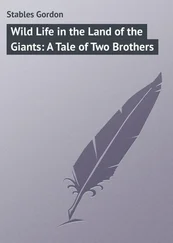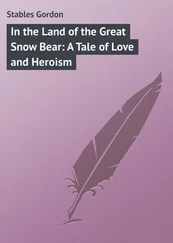Father liked the company of braves very much and he sometimes invited a number of them to come to his tipi for a good time. He arranged for these parties beforehand by asking mother to prepare a nice meal. When the friends arrived, there would be plenty of food to serve. While the feast was being enjoyed, the braves related experiences of the hunt, of war, of their vigils and of wico oyake, which is the only word in Lakota denoting the history of the tribe. These talk fests usually ended with the braves telling jokes on one another and there was much merriment. I was sure to be about somewhere sitting very quiet and where I would not be easily observed but seeing and hearing everything. So brave in their hearts were these warriors that they sat and told the most thrilling and hair-raising experiences as if they were everyday happenings. It was a great sight and I am glad that I have this picture of my Lakota forbears.
Lakota children, like all others, asked questions and were answered to the best ability of our elders. We wondered, as do all young, inquisitive minds, about the stars, moon, sky, rainbow, darkness, and all other phenomena of nature. I can recall lying on the earth and wondering what it was all about. The stars were a beautiful mystery and so was the place where the eagle went when he soared out of sight. Many of these questions were answered in story form by the older people. How we got our pipestone, where corn came from, and why lightning flashed in the sky, were all answered in stories. The springs were wiwila or living things. But all things lived and were good for the Lakota. Even the spider came to the brave on the mountain top with a message of friendship.
A Lakota brave was once holding his vigil and fasting. In his vision there came to him a human figure all in black. The person in black handed to the brave a plant and said, ‘Wrap this plant in a piece of buckskin and hang it in your tipi. It will keep you in good health.’ When the brave asked who was speaking to him, the figure answered, ‘I can walk on the water and I can go beneath the water. I can walk on the earth, and I can go into the earth. Also I can fly in the air. I am smaller than you, but I could kill you in a moment. I can do more work than any other creature, and my handiwork is everywhere, yet no one knows how I work. I am Spider. Go home and tell your people that the Spider has spoken to you.’ This happened long ago, but the Lakotas still use the Spider’s medicine.
These stories were the libraries of our people. In each story there was recorded some event of interest or importance, some happening that affected the lives of the people. There were calamities, discoveries, achievements, and victories to be kept. The seasons and the years were named for principal events that took place. There was the year of the ‘moving stars’ when these bright bodies left their places in the sky and seemed to fall to earth or vanished altogether; the year of the great prairie fire when the buffalo became scarce; and the year that Long Hair (Custer) was killed. But not all our stories were historical. Some taught the virtues—kindness, obedience, thrift, and the rewards of right living. Then there were stories of pure fancy in which I can see no meaning. Maybe they are so old that their meaning has been lost in the countless years, for our people are old. But even so, a people enrich their minds who keep their history on the leaves of memory. Countless leaves in countless books have robbed a people of both history and memory.
When I was about nine years of age I had the third and last ceremony of childhood—the Confirmation ceremony. This event is the most important one in the life of a Lakota child. In it the confirmed one accepts trusts and obligations that are forever kept and vows are taken that are never broken. In exchange for consecrating one’s life to service the tribe places the one who takes the ceremony in the highest social position and bestows upon him the right to wear the white eagle plume. Those who wear this feather sit at the feasts and take part in ceremonies at which others may only look on.
The Confirmation ceremony is deep and serious in meaning. In nature it is social, religious, and ethical. It is social, for the life of the child will be devoted as much as possible, or as much as wealth will allow, to the service and welfare of other members of his band. Throughout life the confirmed one must stand ready at all times to help the needy and distressed. It is a great honor to be asked by those in want to share your food, clothing, horses, or any comfort of life. By the same rule it is considered a breach of etiquette for one in need to go to another band for help when there are those in his own band consecrated to the work.
The ceremony is ethical in nature, for the practice of all virtues—kindness, generosity, truthfulness and service—are placed above gain and personal profit. The saying, ‘It is more blessed to give than to receive,’ is literally and practically observed. One really becomes his ‘brother’s keeper’ and selfishness is utterly destroyed. For one to shrink from meeting the duties implied in the Confirmation ceremony is to lose face and standing.
The religious import of the ceremony is profound, for the child is given into the guardianship of the invisible powers of goodness. With solemn ceremony and before the sacred altar of earth, the Spirit of the Great Mystery is felt and acknowledged. Through song and prayer His power is begged to remain and guide the child throughout life, that it may walk only in righteous ways. When at last the pipe has been smoked, the pact with the Great Mystery is made.
My two sisters and myself were confirmed at the same time. We wore the finest clothing we had ever worn and enjoyed the richest feast ever prepared for us. Our godfather provided the feast and furnished the clothing for me and my sisters. As for father, it cost him as many of his best horses as he could spare from his herd. When all was over, father and godfather were poor men, but it was worth the sacrifice to enjoy the honor for the rest of our lives.
The father wishing to give his child the benefit of the Confirmation, first takes stock of his wealth. He counts his horses and decides the least number that he can possibly get along with. The rest of the herd he will contribute as presents the day of the ceremony. The father then chooses a man whom he knows to be trustworthy and most fitted to be the godfather of his children. A friend is asked to carry the information to the man chosen to be godfather. It is considered a great honor to be asked to be a godfather and I have never known a man to refuse such a request. To be able to stand the sacrifice willingly and gladly is a mark of strength and quality.
The godfather at once begins preparations. He selects the singer of the sacred songs and two dancers to perform the Confirmation or Corn dance. These songs and dances are given on no other occasion. Godfather makes the rattles, drums, and wands which are sometimes highly decorated. Sometimes the small children are carried in buffalo robes. Godfather gets the robe and selects four women to carry the four corners. All the women relatives are called together and asked to help in making the garments for the children. Everything worn by the child must be new, and no effort is spared to make each one look its best. All the art and skill of the maker is applied, and sometimes there is much vying in having one set of garments outdo the garments of another ceremony. Some of the articles of dress made for Confirmation are very valuable when decorated with painting, porcupine-quill work, and elk’s teeth. A tipi is set up in some convenient place in the village to house the beautiful garments until they are to be worn. Then there is the feast to think of, and godfather furnishes the food for this and selects the cooks, helpers, and waiters. Last of all, godfather builds the sacred altar of earth. It is square and at each corner there stands a stick at the top of which is tied a little bag of tobacco. In the center of the altar is placed a buffalo skull and around are spread fresh boughs of sagebrush. Close to the altar the pipe is placed, leaning upright against a small rack of boughs or limbs.
Читать дальше



